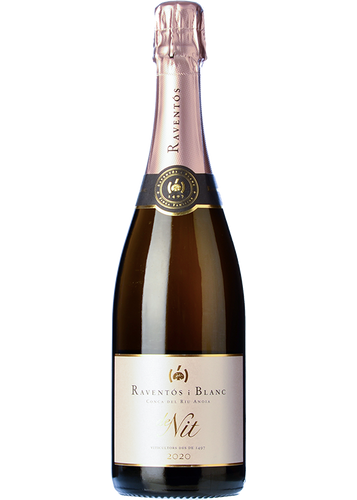| Type | Cava |
|---|---|
| Region | |
| Grapes | |
| Producer | |
| Allergens | Contains sulfites |
| Alcohol contenti | 12.0% |

Spec sheet
The wine
This is a Cava, in a delicate shade of pink, which can’t quite hide its true soul, a white wine at heart. A very fine sparkling wine, with plenty of character, which combines all the elegance and exquisiteness of a white Cava with the alluring power of a rosé, and additional complexity. With every sip you experience the region’s character, the austere and frank nature of a dry, Mediterranean palate. Imbued with precision, discernment and elegance, customary traits of this house. An absolute delight.
What does this wine taste like?
Its nose is deliciously scented, subtle and elegant, with aniseed aromas reminiscent of wild fennel, and floral hints of rose petals. The transparency of the calcareous soils and the slight bitter note of its end, probably due to the skins of the monastrell, round a tasty and balanced wine.
View | Pale pink / Salmon glints |
|---|---|
Bouquet | Citrus fruits / White fruit / Cherries |
Mouth | Vibrant / Good acidity / Smooth / Well-integrated carbonic acid |
Drinking and storing
This Cava is very fragrant and best suits a wide glass, tulip or white wine style. If you’d like to relive its seductive appeal, you can hold on to a few bottles for a couple more years.
Food pairing




Aperitifs / Roasted poultry / Grilled squid
Ratings and awards
| 2022 | 92 PK | |
|---|---|---|
| 2020 | 92+ PK | |
| 2015 | 91+ PK | |
| 2013 | 91 PK | |
| 2011 | 90 PK | |
| 2009 | 93 PK | 90 PN |
Wine critics reviewsReviews by Parker and Jancis Robinson
Customer reviews
Winemaking
The entry into the cellar is made by gravity and the grapes are protected at each stage with carbonic snow. The pressing is slow and smooth, and the delicate must obtained ferments at a controlled temperature, with each soil and each variety being treated separately. After the first fermentations, the wines are assembled and bottled to carry out the second fermentation in some bottles in which they will remain for 18 months. At the time of disgorgement (always indicated on the back label), no liquor of any expedition is added, to respect the spontaneous nature of the wine.
| Ageing period | 18 months |
|---|
Vineyards
Pepe Raventós was very clear since De Nit began to hover over his head that he would need an ink grape that would add complexity to the wine without subtracting freshness and found just what he was looking for in the monastrell grapes on the west side of the Serral hill. There, the deep soils of clay-loam texture bring freshness and elegance to the grape that marks De Nit with its personality.
The works in the vineyard are governed by biodynamic principles while the soils are covered with spontaneous vegetation. All the viticultural practices in Raventós i Blanc aim to promote biodiversity and the natural fertility of the soil, giving the vines a great liveliness that we will later find in each De Nit cup.
| Soil | Clay loam |
|---|---|
| Climate | Mediterranean |
The winery
Raventós i Blanc

Raventós i Blanc is virtually a synonym of traditional and family-run winemaking. The farm where their wines are made has belonged to the Raventós family since 1497. Twenty-one generations have lived and worked here among spectacular vineyards and woodland, located in Sant Sadurní d'Anoia, the sparkling wine capital of Catalonia. The family keep records certifying that they were already making wine here for home consumption and selling must to other winemakers...






















